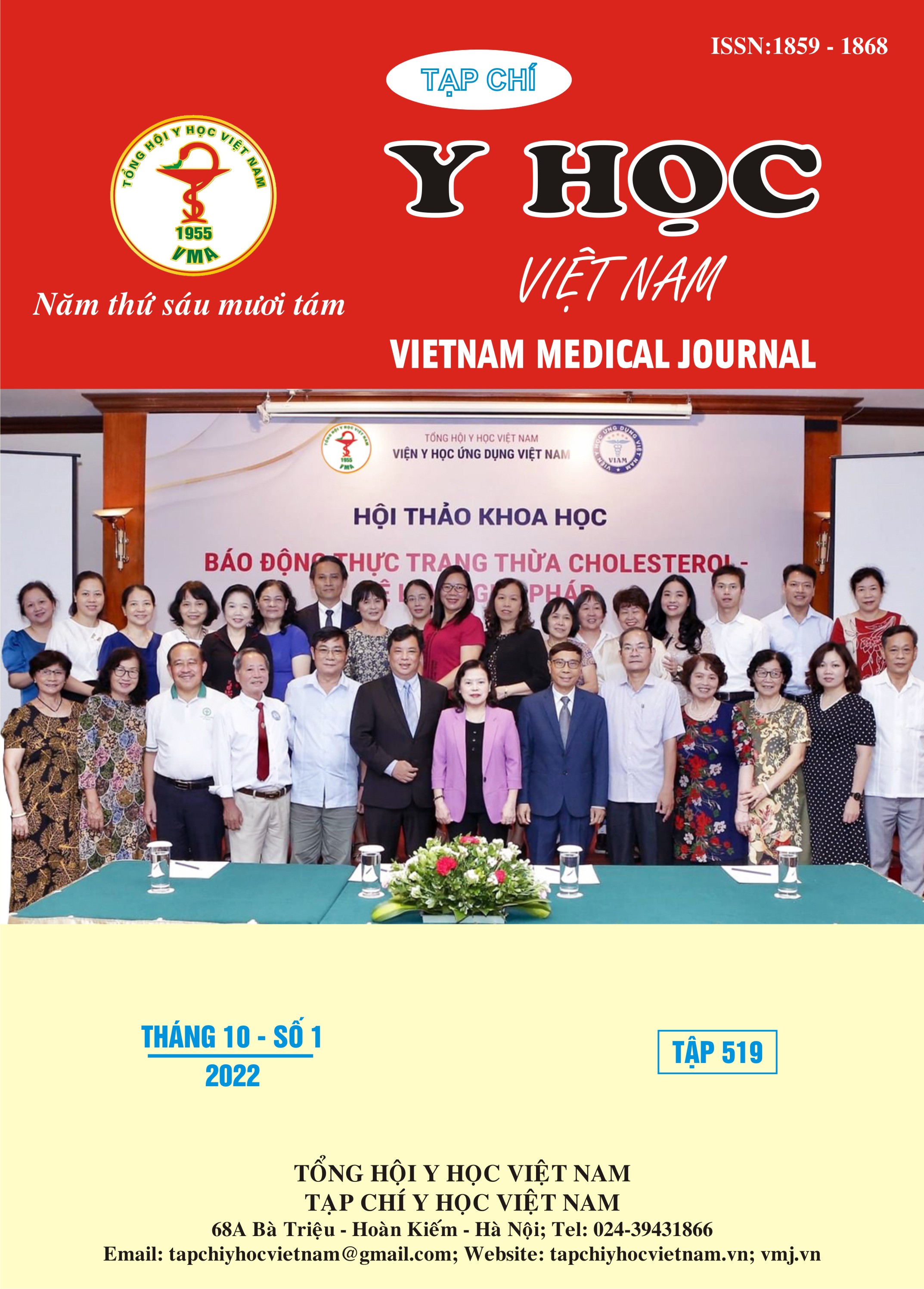EVALUATION OF DUAL-ENERGY COMPUTED-TOMOGRAPHY IN PREOPERATIVE GASTRIC CANCER STAGING
Main Article Content
Abstract
Purpose: This study aims to evaluate the clinical utility of dual-energy computed-tomography (DECT) technique in staging and characterizing gastric cancers. Material and Methods: The prospective study was conducted on 33 patients who were confirmed gastric cancer by endoscopic biopsy at the National Cancer Hospital from August 2021 to August 2022. These patients underwent dual-phasic scans (arterial phase (AP) and portal venous phase (PP)) with DECT mode. The preoperative T and N staging results were compared between groups with pathological results as the gold standard. The iodine concentrations of the gastric lesions and LNs were measured on the iodine-based material decomposition images. All iodine concentration values were normalized against those in the abdominal aorta and defined as normalized iodine concentration (nIC) values. The short axis length of LNs and nIC values were statistically analyzed. Results were correlated with pathological findings. Results: The overall accuracies for T staging were 75.76% and 57.58% determined with the monochromatic images and the conventional images, respectively. No statistically significant difference in the overall accuracies for N staging was found between groups. During the arterial phase (AP) and venous phase (VP), the areas under the curve (AUC) were 0.923 and 0.881, respectively. If the cutoff nIC values of the extraserosal adipose tissue during the AP and VP are 0.085 and 0.08, the sensitivity and specificity in differential diagnosis between T3 and T4 will be 85.7% and 91.7%, respectively. Conclusion: The monochromatic images obtained with DECT may be used to improve T-staging accuracy. T3 and T4 nIC values of the extraserosal adipose tissue showed statistically significant differences which is helpful in the differential diagnosis between T3 and T4.
Article Details
Keywords
DECT, nIC, AUC, AP, VP
References
2. Kadowaki K, Murakami T, Yoshioka H, et al. Helical CT imaging of gastric cancer: Normal wall appearance and the potential for staging. Radiation medicine. 2000;18:47-54.
3. D’Elia F, Zingarelli A, Palli D, Grani M. Hydro-dynamic CT preoperative staging of gastric cancer: Correlation with pathological findings. A prospective study of 107 cases. European radiology. 2000;10:1877-1885. doi:10.1007/ s003300000537
4. Rossi M, Broglia L, Graziano P, et al. Local invasion of gastric cancer: CT findings and pathologic correlation using 5-mm incremental scanning, hypotonia, and water filling. American Journal of Roentgenology. 1999;172(2):383-388. doi:10.2214/ajr.172.2.9930788
5. Habermann CR, Weiss F, Riecken R, et al. Preoperative Staging of Gastric Adenocarcinoma: Comparison of Helical CT and Endoscopic US. Radiology. 2004;230(2):465-471. doi:10.1148/radiol.2302020828
6. Kwee RM, Kwee TC. Imaging in assessing lymph node status in gastric cancer. Gastric Cancer. 2009;12(1):6-22. doi:10.1007/s10120-008-0492-5
7. Matsumoto K, Jinzaki M, Tanami Y, Ueno A, Yamada M, Kuribayashi S. Virtual monochromatic spectral imaging with fast kilovoltage switching: improved image quality as compared with that obtained with conventional 120-kVp CT. Radiology. 2011;259(1):257-262. doi:10.1148/radiol.11100978
8. Zhao L qin, He W, Li J ying, Chen J hong, Wang K yang, Tan L. Improving image quality in portal venography with spectral CT imaging. Eur J Radiol. 2012;81(8):1677-1681. doi:10.1016/ j.ejrad.2011.02.063
9. Gastric Cancer Staging with Dual Energy Spectral CT Imaging - PMC. Accessed August 23, 2022. https://www.ncbi.nlm.nih. gov/pmc/articles/PMC3570537/


